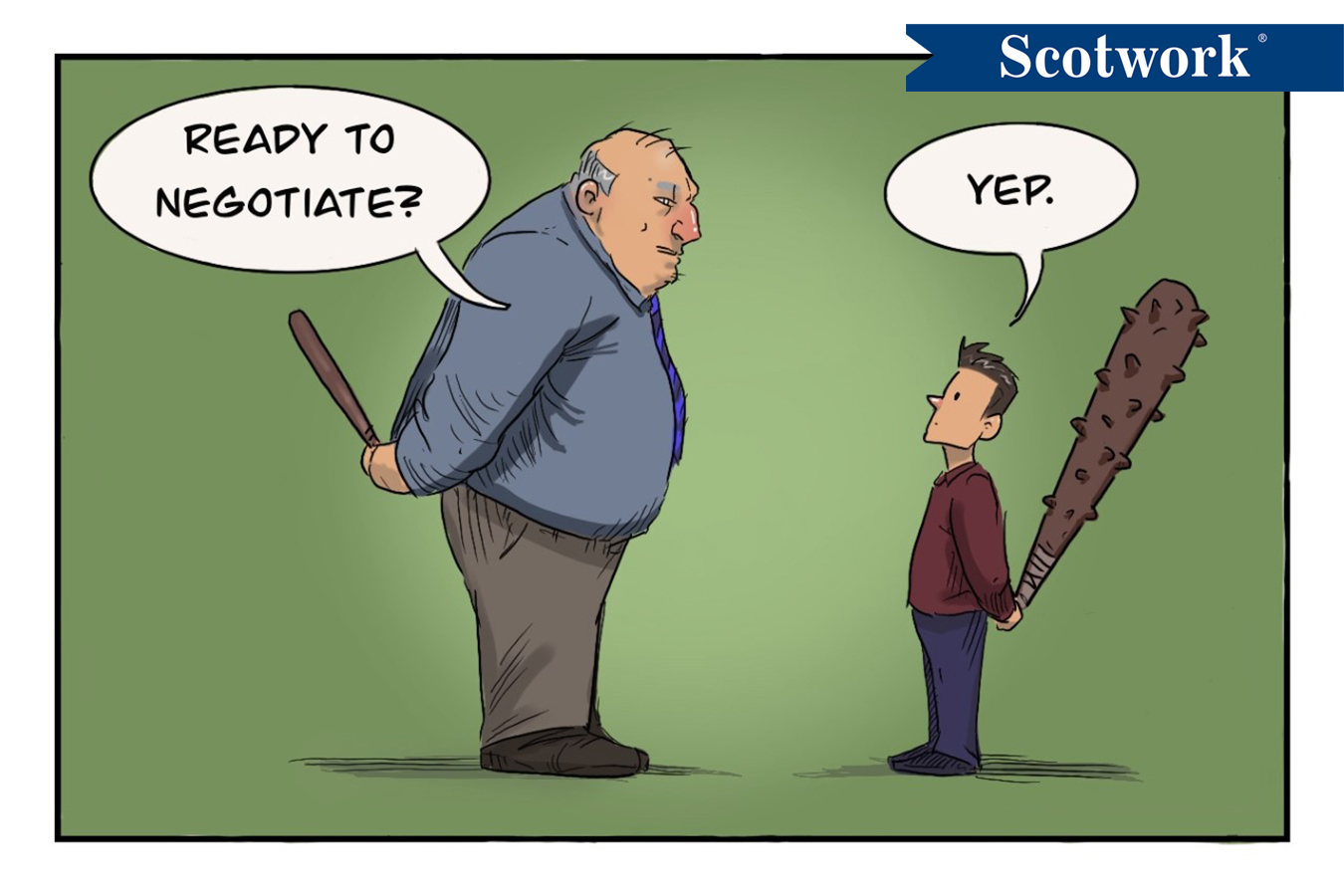We constantly analyze trends at the negotiating table. In a recent survey of our community, where we asked people about their toughest negotiation (you can participate by clicking here), one person cited something that I found particularly interesting regarding the perception of power. It seems that when her team is faced with a larger opponent, they give in more, but when faced with a smaller opponent, they feel they can demand more. Ultimately, it’s all about how her team perceives their power.
When a smaller organization negotiates with a larger organization, we often see the smaller organization’s team negotiate from a place of fear, not confidence. It gets even worse when the larger organization represents a significant portion of the smaller company’s revenue or is its sole source of supply. In either case, the smaller organization walks on eggshells, trying not to do anything to upset the larger company or undermine the relationship.
Likewise, a larger organization’s negotiators tend to have an air of confidence that can lead them to be dismissive of, or inflexible with, the smaller organization. The larger organization uses its size to bend the will of the smaller organization while being less concerned about the relationship or that the smaller organization could harm it in any way.
Both scenarios are frequently based on the perception of power. Don’t be fooled: perceived power is real power. If you believe the other side has power, and you never challenge it, then they have the power you’ve given them. If you believe you have power, and the other side never challenges your belief, then you have the power they’ve given you.
Perception is challenged only by reality. Real power is derived from what you can do for and to someone else, both the good (incentive) and the bad (sanction), as well as your ability to walk away from a deal.
In our experience, people tend to focus more on the money they can give or gain as an incentive. But there are so many more incentives beyond a deal’s monetary elements. In fact, in many negotiations, money isn’t the key driver. Therefore, it shouldn’t be the key incentive. You should look at everything from the value, to the relationship, to the scope of the deal, and so forth, to see all the incentives available to you.
For many people, it’s harder to examine the sanctions they could employ. We tend to first consider things we can offer, but there’s just as much power in things we can take away or not give. We will not use them in the same way, but reducing scope, diversifying, or decreasing value are all legitimate sanctions at our disposal — up to and including the ultimate sanction: walking away.
To truly leverage your power, you should examine your real power so that you can differentiate perception from reality. During your negotiation, always challenge your power analysis, asking, “Is this real or just my perception?”
For leaders, have your teams share with you their power analysis. Help them sift through what’s real and what’s not. Oftentimes, your team is acting on what they believe they can do based on assumptions. Give them clarity before they walk into the room. This will, in turn, give them confidence in their own power.
As the saying goes, perception is reality. Change your perception, and you’ll change your reality.
We Can Help You Assess Your True Power at the Negotiating Table.
Does your team give too much at the negotiating table because they overestimate the other side’s power? We can help! Draw on Scotwork’s nearly 50 years of real-world negotiating experience to get better deals, save time, and create value that preserves and strengthens relationships. Partner with one of our advisers to ensure you have the optimum view of your deal.

